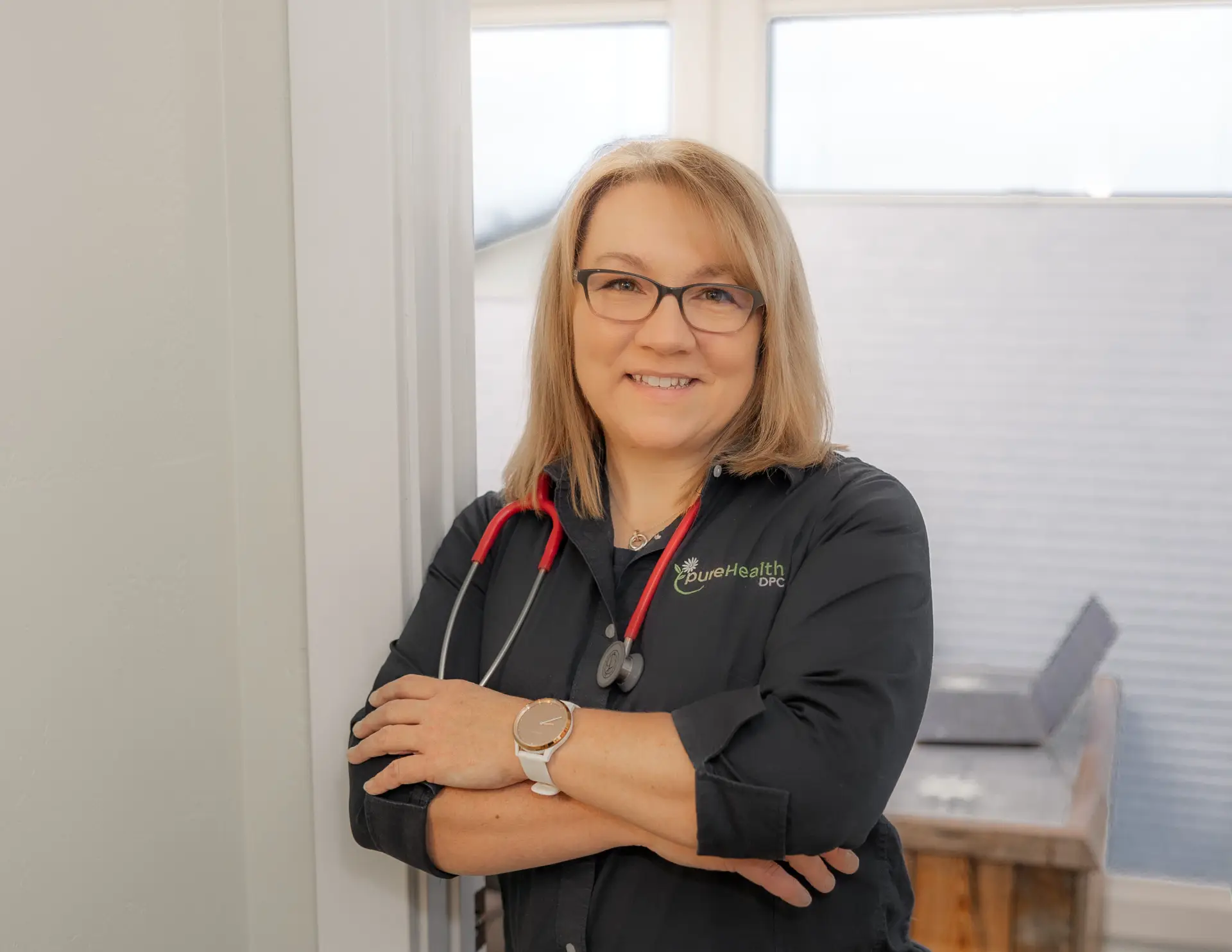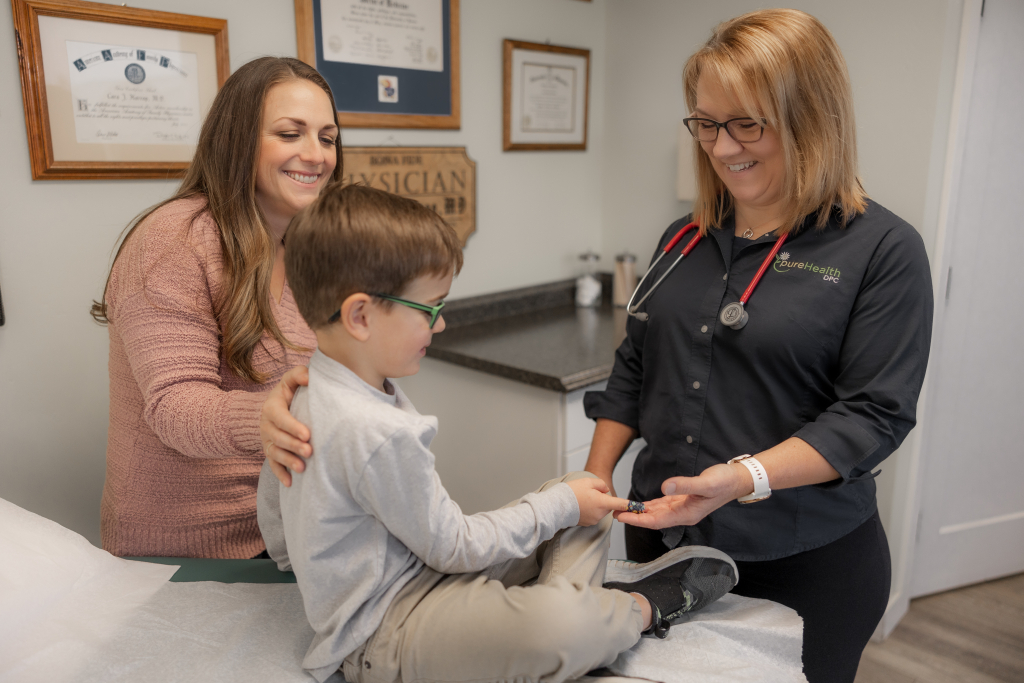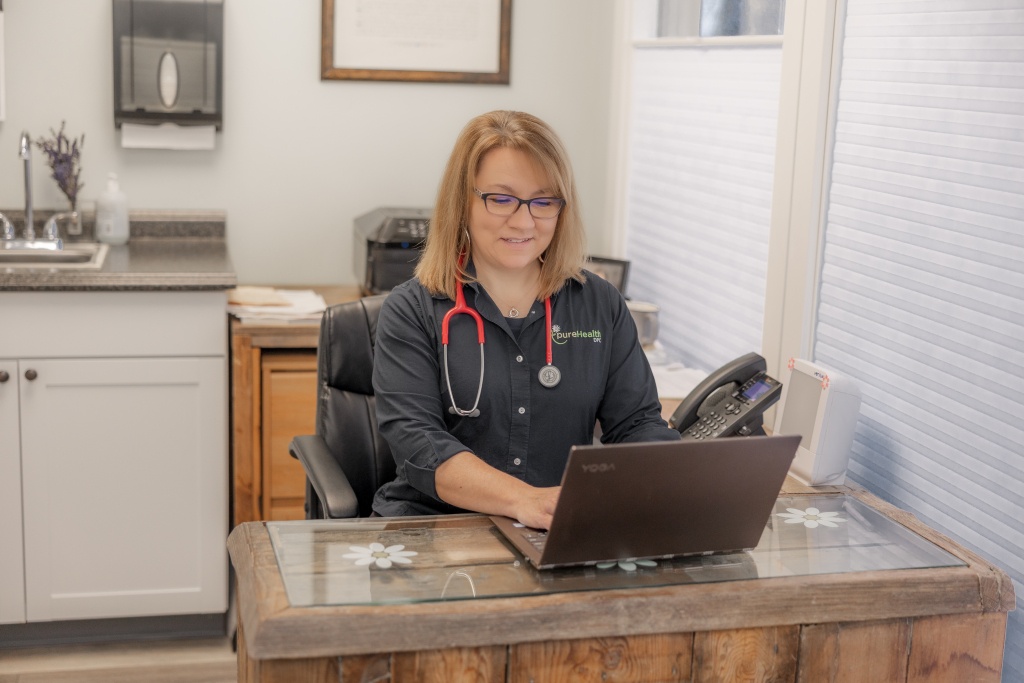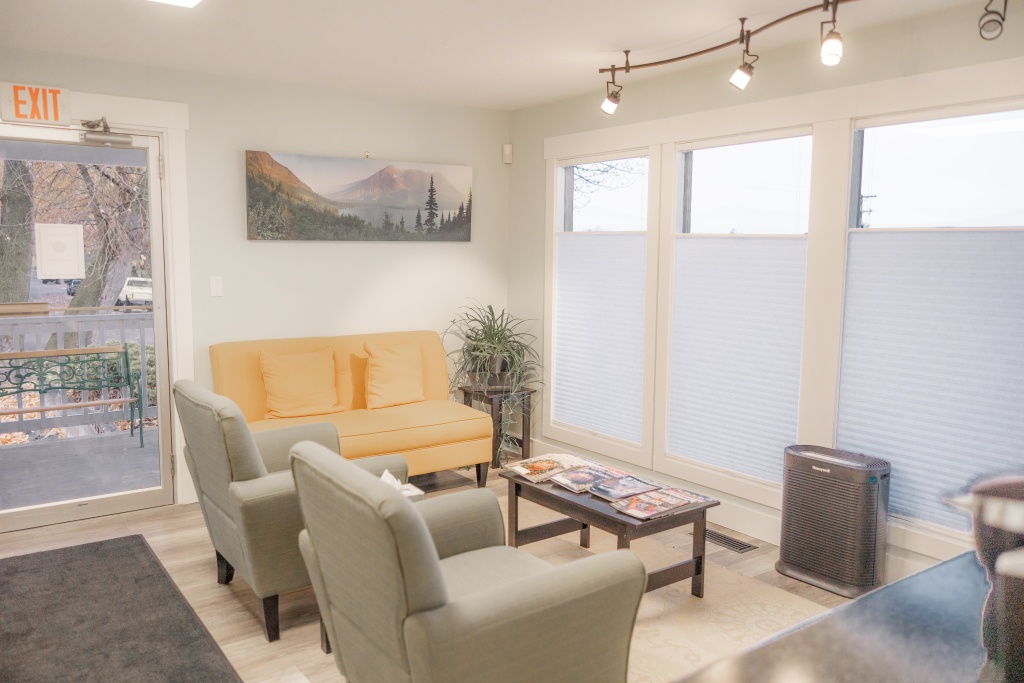How a Small-town Physician Rediscovered Her Love of Medicine

In a town as close-knit as Polson, Montana — population 4,500 — Dr. Cara Harrop knows she’s always on duty. “I can’t go to the grocery store without getting asked to look at somebody’s rash,” she says.
There’s nowhere to run, quite literally, from patients in need. Dr. Harrop was jogging recently near her house — on the Flathead reservation at the south end of Flathead Lake, overlooking the majestic Mission Mountains — when a patient got out of their car to ask if their daughter needed urgent care. “I’m sweaty and gross,” Dr. Harrop recalls, “but I’m like, OK, we’ll just stand here on the side of the road and have a little doctor visit.”
“People think that annoys me,” she adds. Perhaps the film Waiting for Guffman comes to mind, in which a doctor played by Eugene Levy is asked to examine another man’s ailing private parts at a restaurant. But for Dr. Harrop, random run-ins exemplify what she cherishes about life as a family physician in a place like Polson. “In a small town,” she explains, “everyone views you as part of their tribe.”

The Sick Business of Medicine
It’s shocking to learn that a few years ago, Dr. Harrop was on the verge of abandoning a career she’d dreamed of since she was 6, playing with a Fisher-Price hospital in her hometown of Green River, Wyoming.
Over time, the business of medicine had broken Dr. Harrop’s stubbornly upbeat spirit: a minimum-wage worker at a school who was “miserable” at the thought of paying $6,000 for a gallbladder removal; a man in his mid-50s who suffered a heart attack and then was hit with a $130,000 bill for a helicopter flight to a referral hospital and another $200,000-plus tab for medical expenses; the absurdity of charging $800 for a 10-minute circumcision.
“I just could not wrap my head around a system of medicine that profits off people being sick,” Dr. Harrop says.
Business, she realizes in hindsight, is hardly ever addressed in medical school. Dr. Harrop aspired to become a pediatrician when she entered the University of Kansas School of Medicine, but on the first night of her first clinical rotation she found herself delivering babies. She loved it. Family practice, she discovered, was “the best of both worlds.”
Medicine would allow her to form close bonds with a small community like the one where she grew up. In 2003, soon after completing her residency, Dr. Harrop landed a job at a hospital in Montana. The work and relationships were as fulfilling as she’d hoped, but over the next 14 years, despite a $300,000 salary, her life began to unravel.
“I was busy all the time,” she says. “I didn’t have much of a social life. I ended up getting a divorce,” leaving her a single mom to a teenage daughter. Cramming 30 patients into a day while dealing with the headaches of health insurance became too much to bear.
So, she quit. Dr. Harrop enrolled in a yearlong, online Arizona State University master’s program in healthcare innovation, during which she realized that her former hospital employer wasn’t to blame. The problems with for-profit healthcare were systemic.

The Promise of Direct Primary Care
Around this time, Dr. Harrop happened to open one of the hundreds of daily emails she typically ignores — this one from the American Academy of Family Physicians. The email linked to a video of Boise, Idaho’s Dr. Julie Gunther hailing the upsides of direct primary care. “It was astonishing,” Dr. Harrop says. “Everything she said made so much sense about how we could come up with a payment model that’s affordable and predictable.”
By summer of 2018, Dr. Harrop had summoned the courage — and done the hard work, like buying and remodeling an office — to open pureHealth DPC, the only independent practice in Lake County. “It was terrifying,” she says. “I had never used any sort of accounting software. I never took a business class. But the opportunity to own my own practice in the town I love was enough to push through.”

Luckily, two of her patients were editors at local newspapers who helped promote her new practice. So did another patient who works at a radio station. The business, in which adult patients pay $75 a month for a host of primary-care services, began to catch on.
She has some advice for physicians thinking of starting their own DPC practice:
- Be patient. Not wanting to take on major debt, Dr. Harrop waited until she could regularly meet her bills before paying herself a salary. She feels comfortable doing so now that the practice has been in the black for two-plus years.
- Get the right EHR. Initially, Dr. Harrop would work into the night getting caught up on charts. When she switched to Elation Health, she appreciated the “quick and slick” process of inputting patient information to generate records that tell a story about patient visits.
- Find the right teammates. Dr. Harrop recruited a medical assistant with experience in family medicine, Vanessa Sandoval, to help launch her practice. Once Sandoval was persuaded that DPC is a dependable business model, she became an indispensable colleague, assisting with a workload that would have been overwhelming for one person.
Caring for Her Community
Dr. Harrop doesn’t make as much money as she did working for a hospital. But the upsides of independent practice more than compensate for the pay cut.
Sometimes, when the weather’s nice, Dr. Harrop and her patients will go for a walk instead of chatting in the office. The patient-doctor rapport can be especially powerful in rural communities.
She speaks of a middle-aged man who recently lost about 40 pounds. A friend at church urged him to go to urgent care, where he was diagnosed with diabetes and referred to a hospital roughly 70 miles away in Missoula. Due to the strains of the pandemic, the hospital couldn’t see him for three months.
“He’s not doing well, and he doesn’t understand diabetes,” Dr. Harrop recalls. Upon the recommendation of a church friend, the man called her office and scheduled an appointment for the following day. During an hour-and-a-half visit, Dr. Harrop explained how to check his blood sugar, and during his second visit he enthusiastically discussed continuous glucose monitoring and insulin pumps.
“He’d been so overwhelmed by his diagnosis that he felt like giving up,” Dr. Harrop says. In a sense, it echoes her own low point in medicine, when she was beaten down to the point of almost bailing on her dream career.
Looking back, “that would have been tragic,” Dr. Harrop says. Fortunately, she once again feels like she did as a little girl, playing with a Fisher-Price hospital and imagining a career of caring for her community. “I can’t picture myself doing anything else.”
